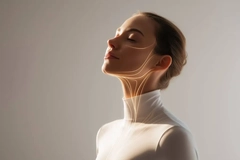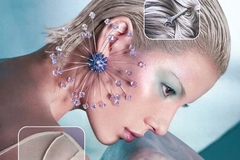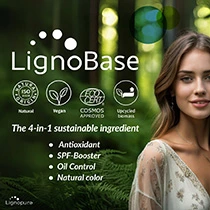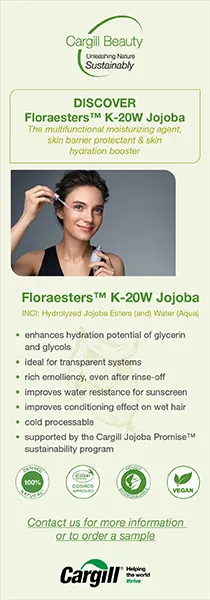“Insidious” skin care: Young girls exposed to harmful beauty advice on TikTok

A study has found that tweens and teenage girls following beauty advice on TikTok may harm their skin by being encouraged to adopt intensive routines meant for adults. The results show that girls aged seven to 18 use, on average, six skin care products and have a routine exceeding 10 minutes, using products mainly created for mature skin.
The study revealed that videos on TikTok, often titled “Get ready with me,” frequently use digitally trending products that may come at a “high cost.” Apart from being expensive, these products can cause irritation, allergic reactions, and enforce social pressures regarding beauty and race.
“[The] high risk of irritation came from using multiple active ingredients at the same time, such as hydroxy acids (AHA), as well as applying the same active ingredient unknowingly over and over again from multiple products,” says Molly Hales, co-author and board-certified dermatologist in the department of dermatology at Northwestern University Feinberg School of Medicine, US.
The study finds that these products, carrying a high risk of skin irritation, are heavily marketed to young consumers on TikTok.
Millions of views
The researchers created accounts on TikTok, reporting as 13-years-olds, and used the “For You” tab to get access to content suggested for this demographic.
Once they gathered 100 unique videos, they started collecting the creators’ demographics, the products used, the number of views and likes, the number of products used, and their costs.
The videos collected had an average of 1.1 million views, reaching a maximum of 17 million. They used six products spanning cleansers, serums, toners, and moisturizers.
Hales points to one of the highest-viewed videos, which shows a young creator applying six different products, one over the other, that all contain AHAs, which can increase the risk of UV-induced damage.
 The videos collected had an average of 1.1 million views.Financial and health costs
The videos collected had an average of 1.1 million views.Financial and health costs
The researchers found that, on average, TikTok tweens use 11 active ingredients, with a maximum of 21. These ingredients are potentially irritating to the skin and may create sun sensitivity and allergies, known as contact dermatitis.
Contact dermatitis is a skin allergy developed from using certain cosmetic ingredients. These ingredients trigger a reaction in the skin, which may result in a lifelong condition limiting a person’s use of personal care products such as certain soaps, shampoos, and skin care ingredients.
In one video analyzed, the teenage creator used 10 facial products in six minutes.
“As she’s applying the products, she begins to express discomfort and burning, and in the final few minutes, she develops a visible skin reaction,” says Tara Lagu, senior author of the study and an adjunct lecturer of medicine and medical social sciences at Feinberg.
The average cost for the teens’ skin care routines was US$168 for one month’s worth of products, although some stretched over US$500.
The study, published in Pediatrics, also found that only 26% of the products used in the viral videos were UV-protecting, which is especially important during the summer.
 The authors say these videos do not benefit the teens watching them.A problem larger than health
The authors say these videos do not benefit the teens watching them.A problem larger than health
The authors say these videos do not benefit the teens watching them, and their dangers extend beyond skin damage. The algorithm structure makes it nearly impossible for pediatricians and parents to track what content is being shown to adolescents.
Commonly used terms in the videos were beauty, health, and wealth, which the authors say encourage consumerism.
“We saw that there was preferential, encoded racial language in some cases that emphasized lighter, brighter skin,” says Lagu. “I think there also were real associations between the use of these regimens and consumerism.”
The authors comment that phrases such as “glass skin” and “porcelain skin” are racially coded language, as they encourage and praise having lighter skin. Therefore, they encourage girls to “pursue unattainable ideals of physical perfection under the guise of skin health and self-care.”
Hales concludes, “It’s problematic to show [young] girls devoting this much time and attention to their skin. We’re setting a very high standard for these girls.”
“Pursuing health has become a virtue in our society, but ‘health’ is also very wrapped up in ideals of beauty, thinness, and whiteness. The insidious thing about ‘skin care’ is that it claims to be about health.”












